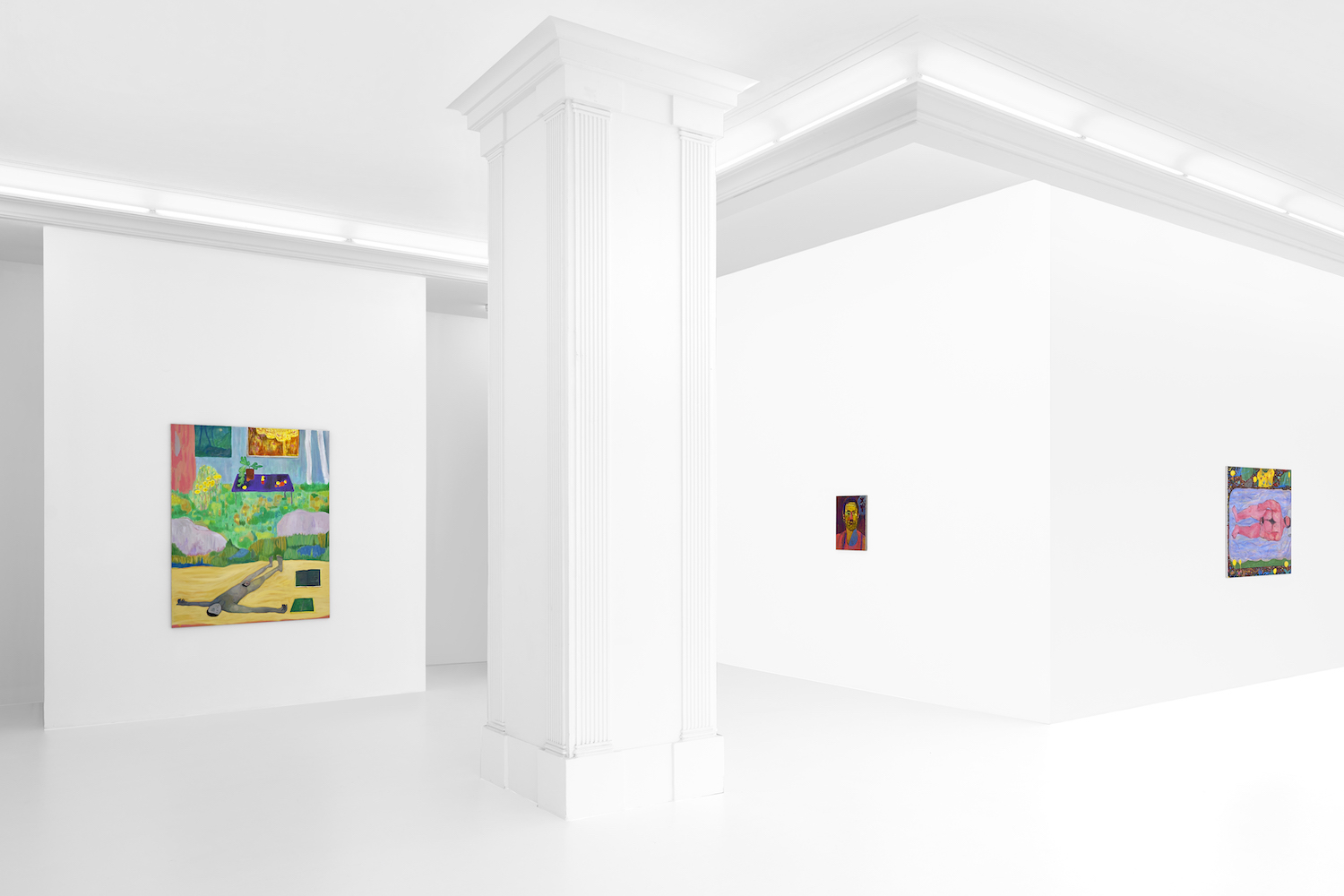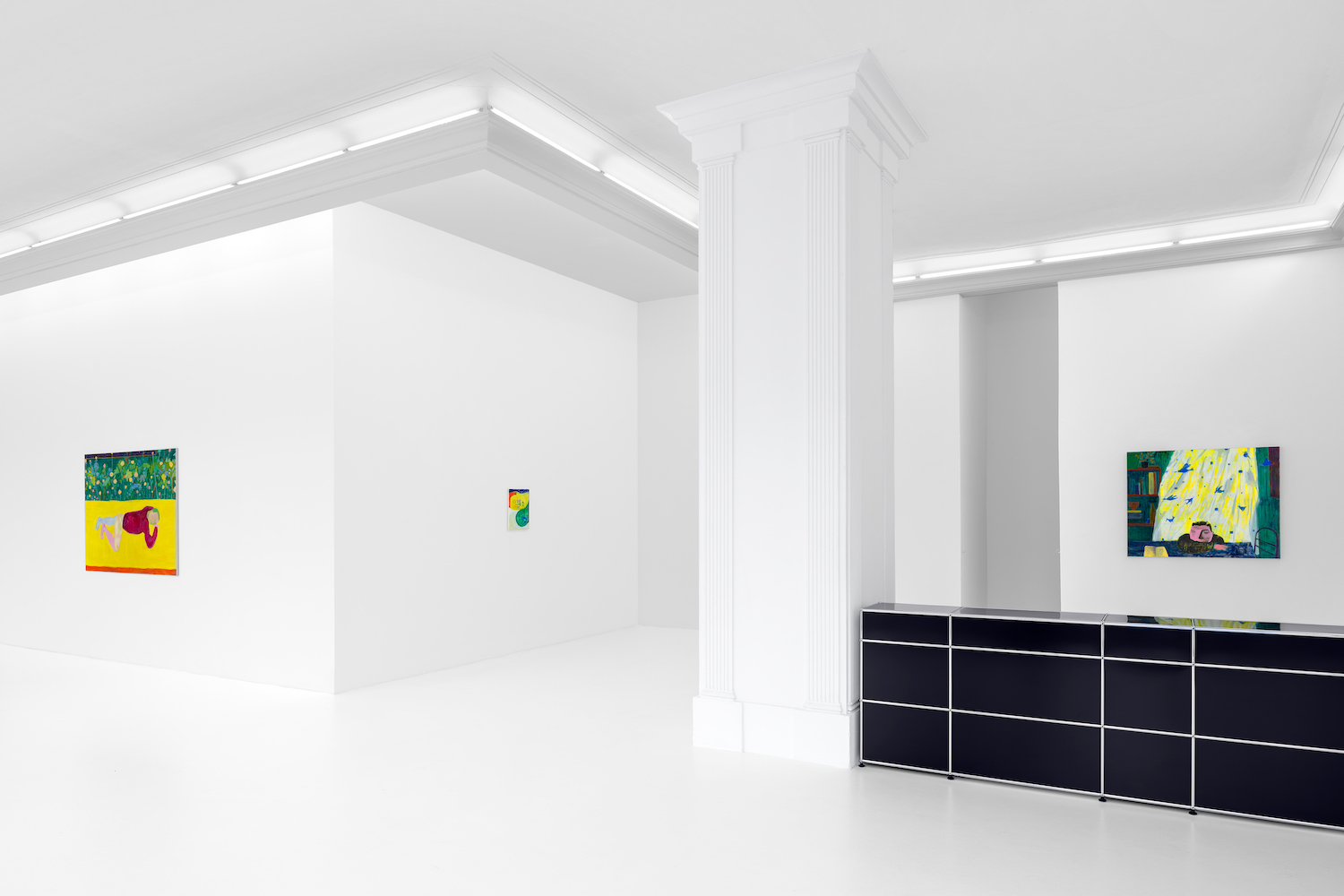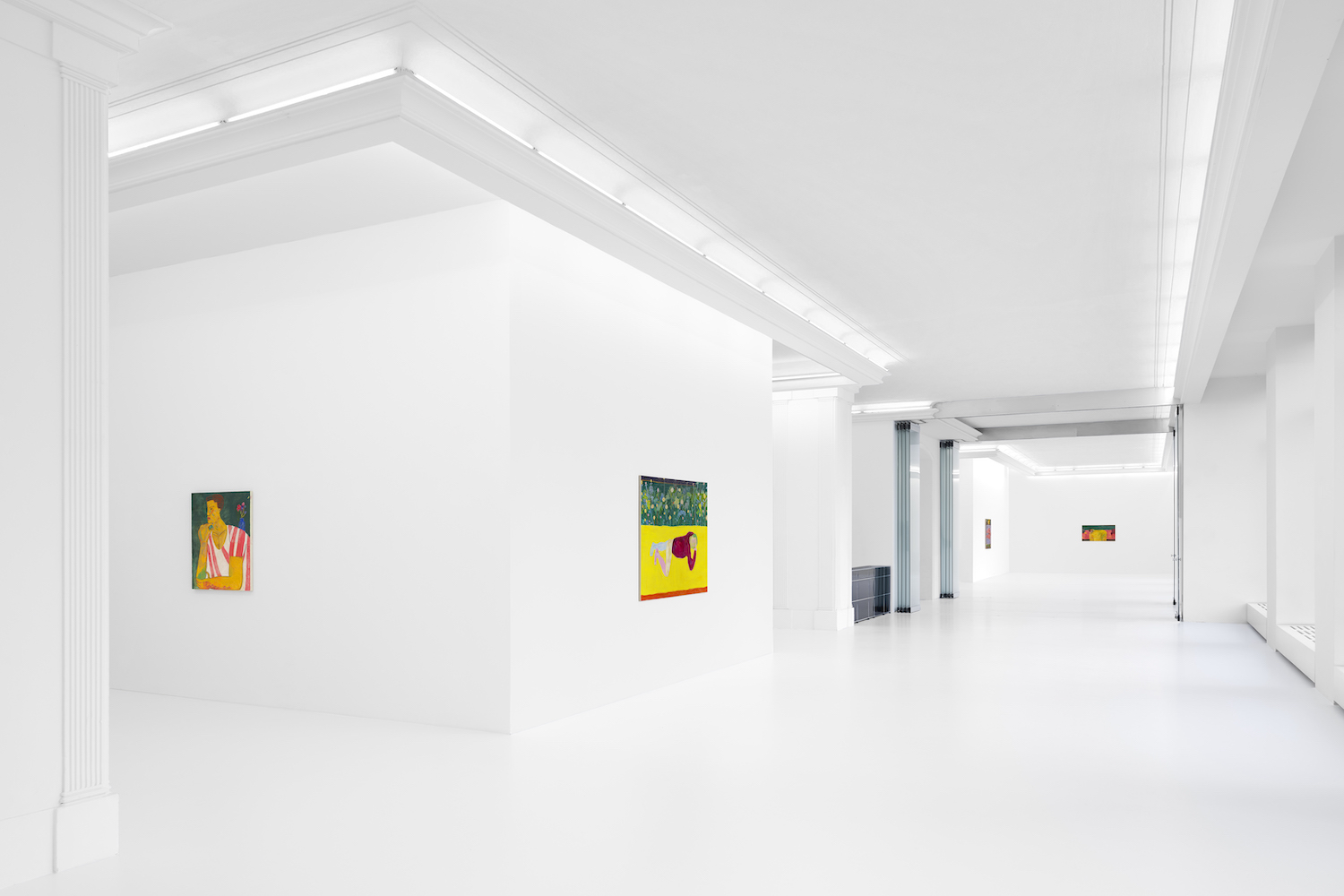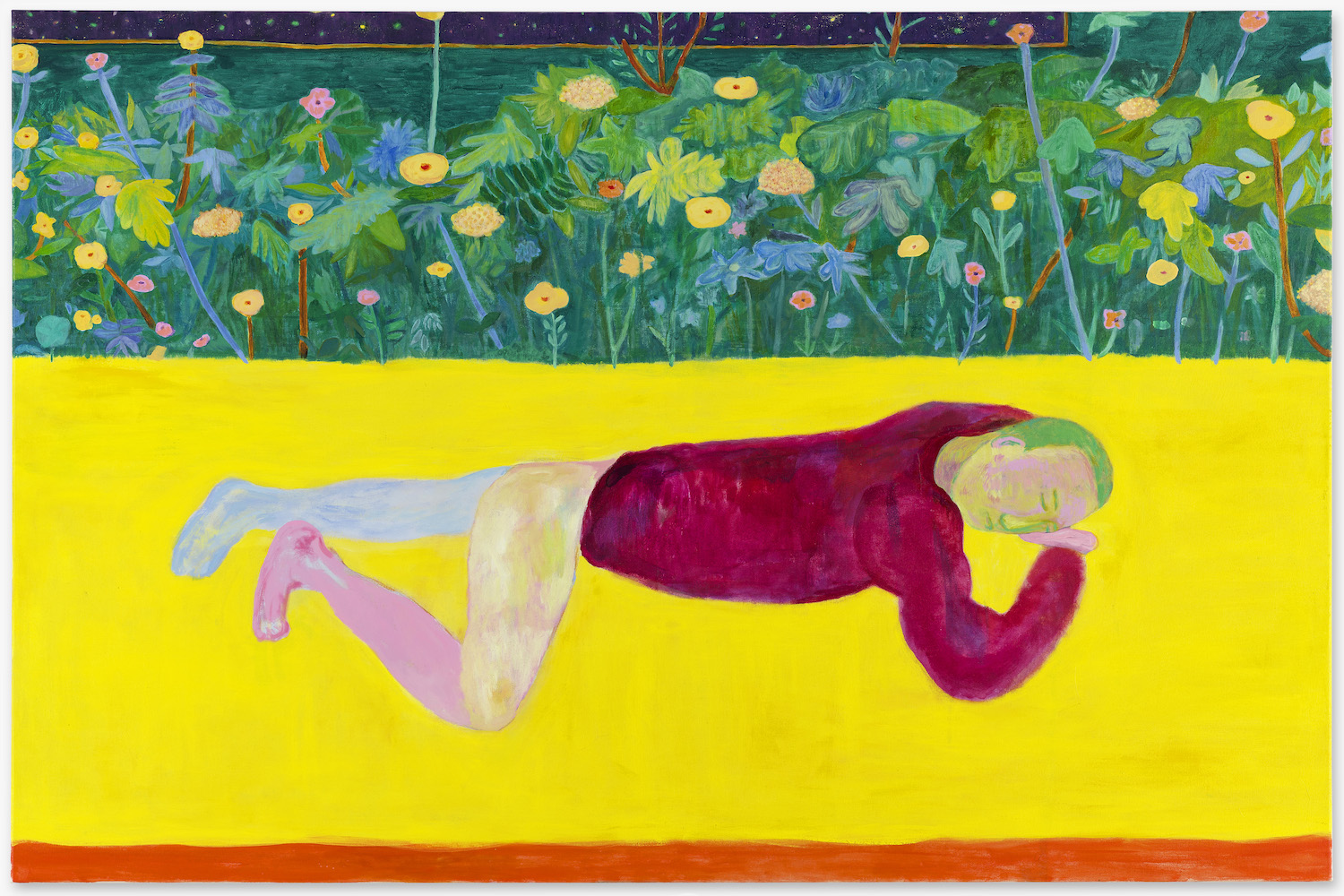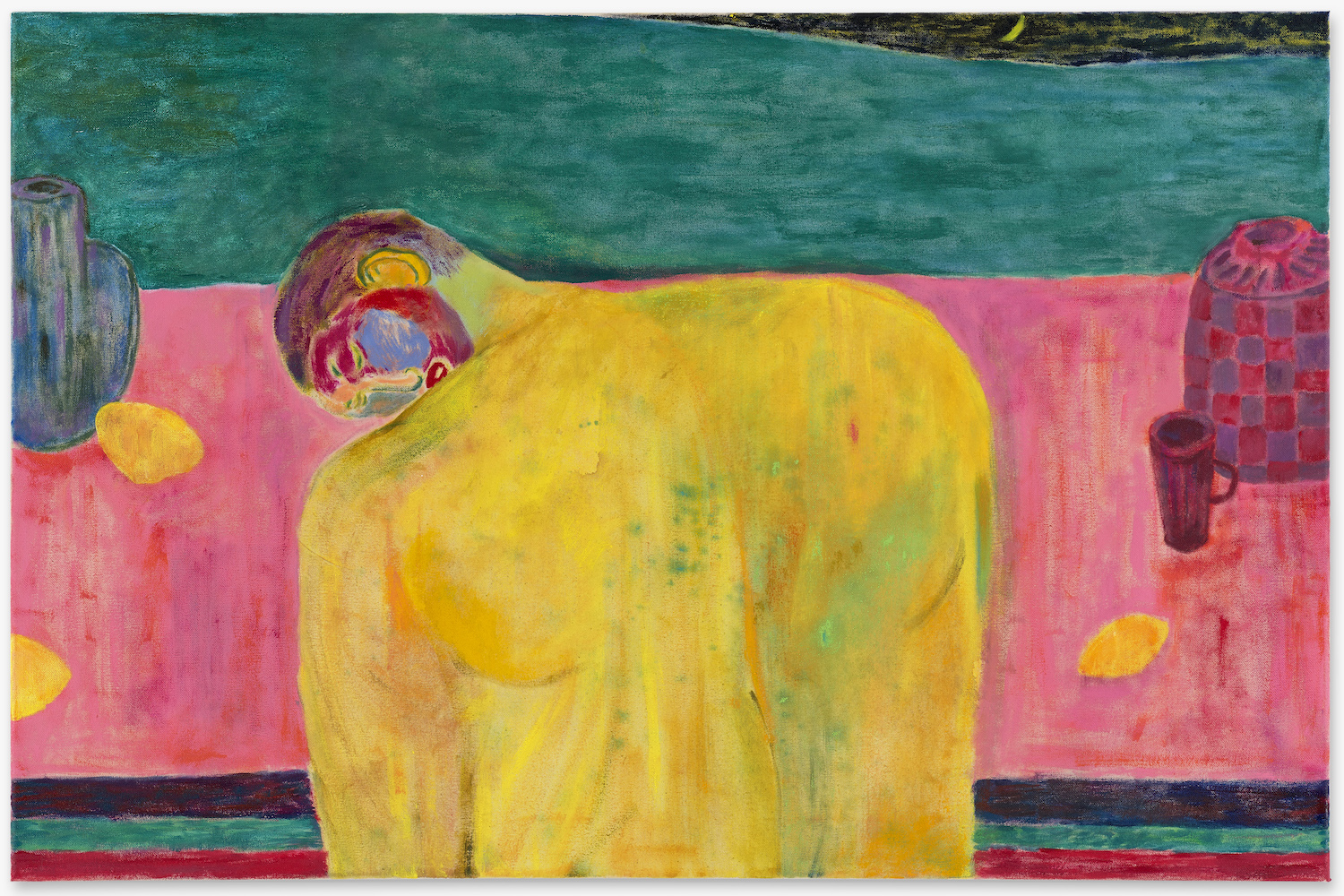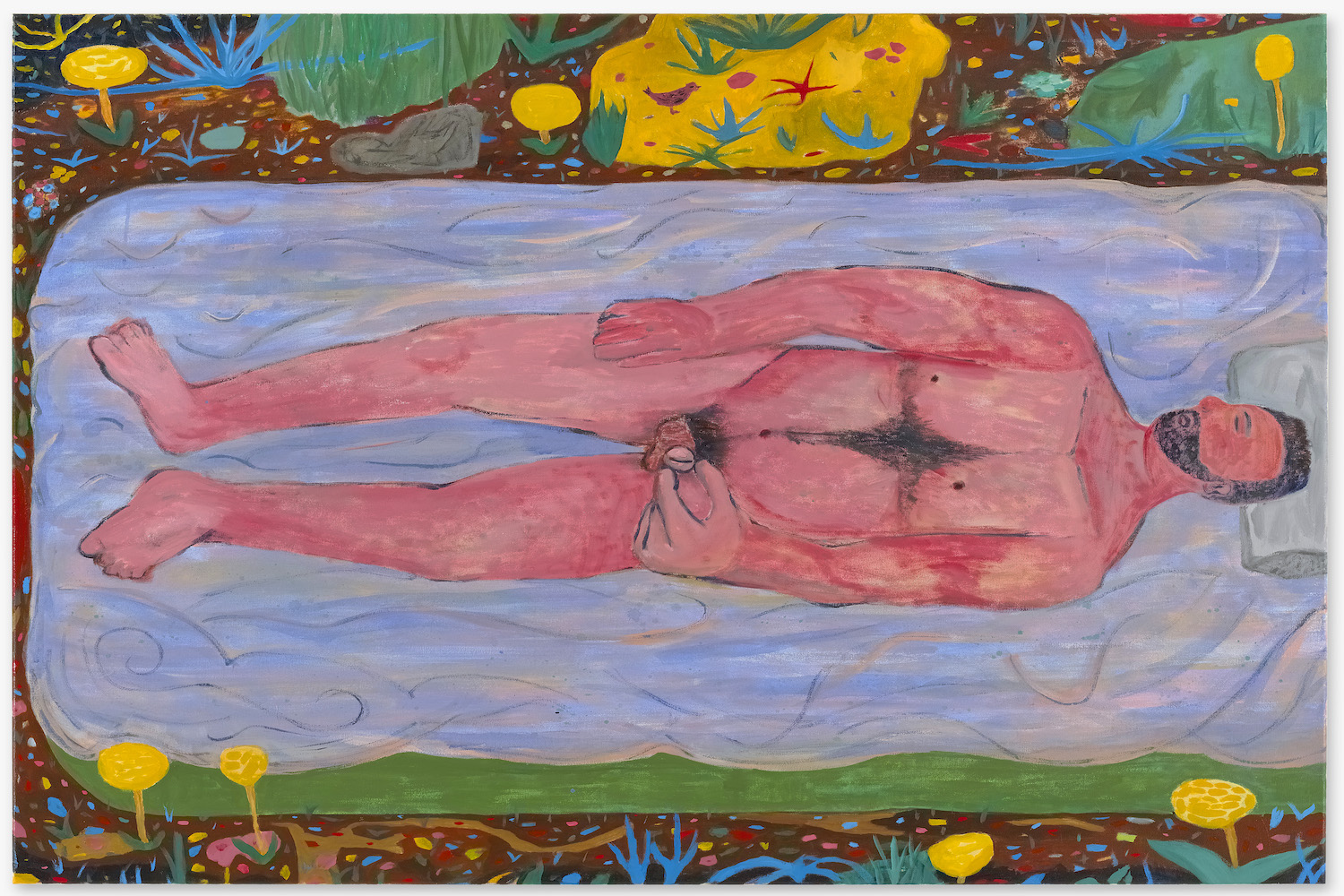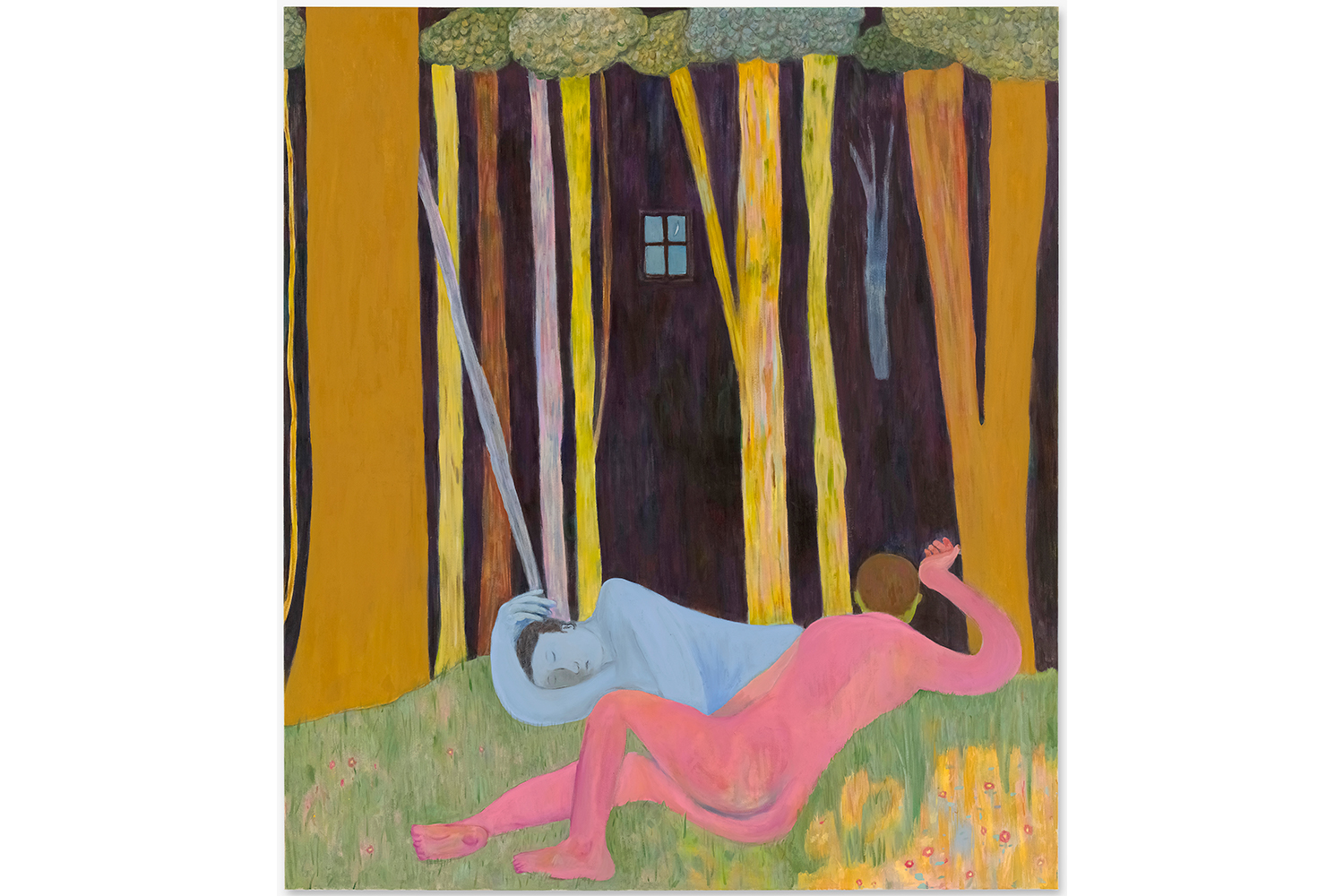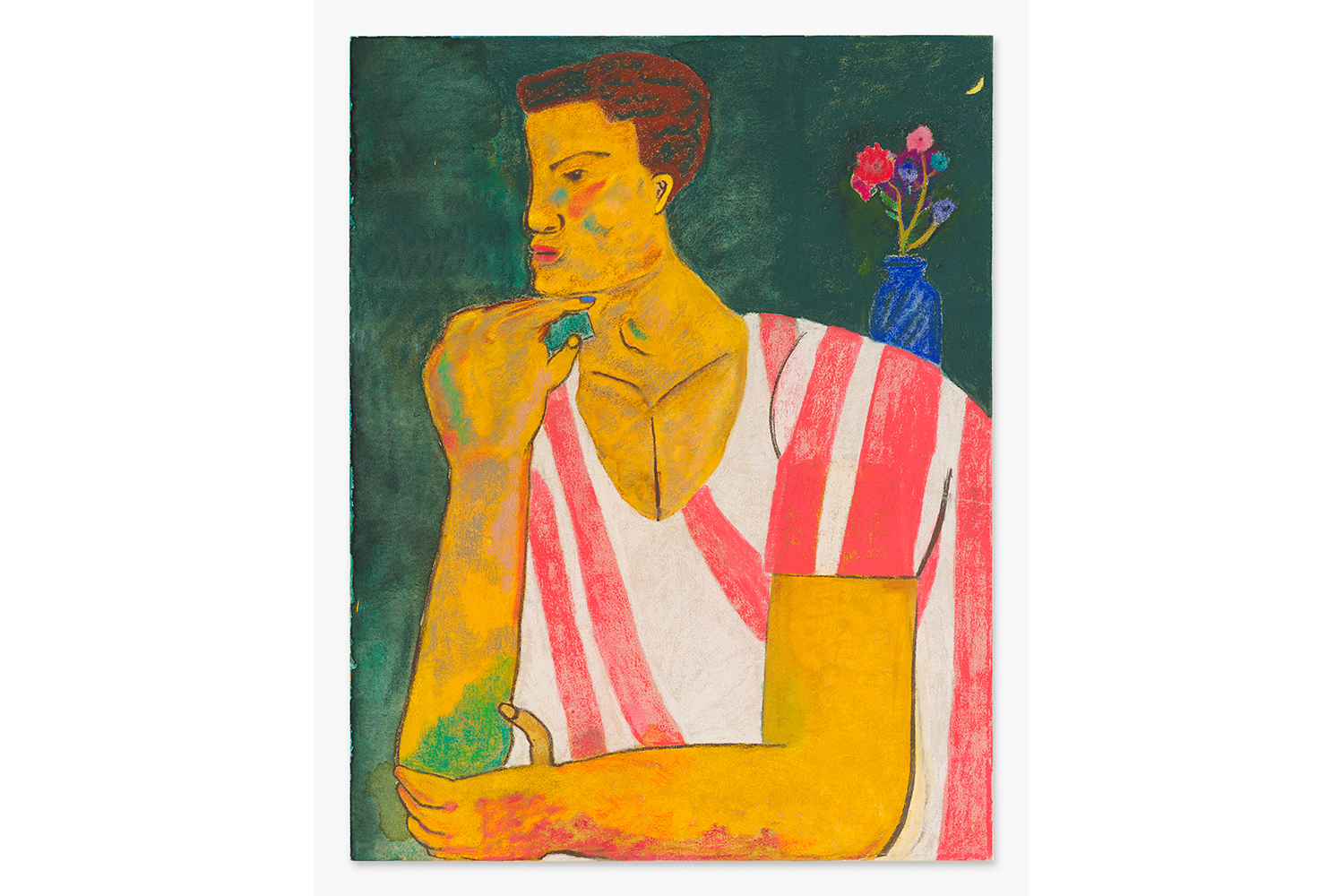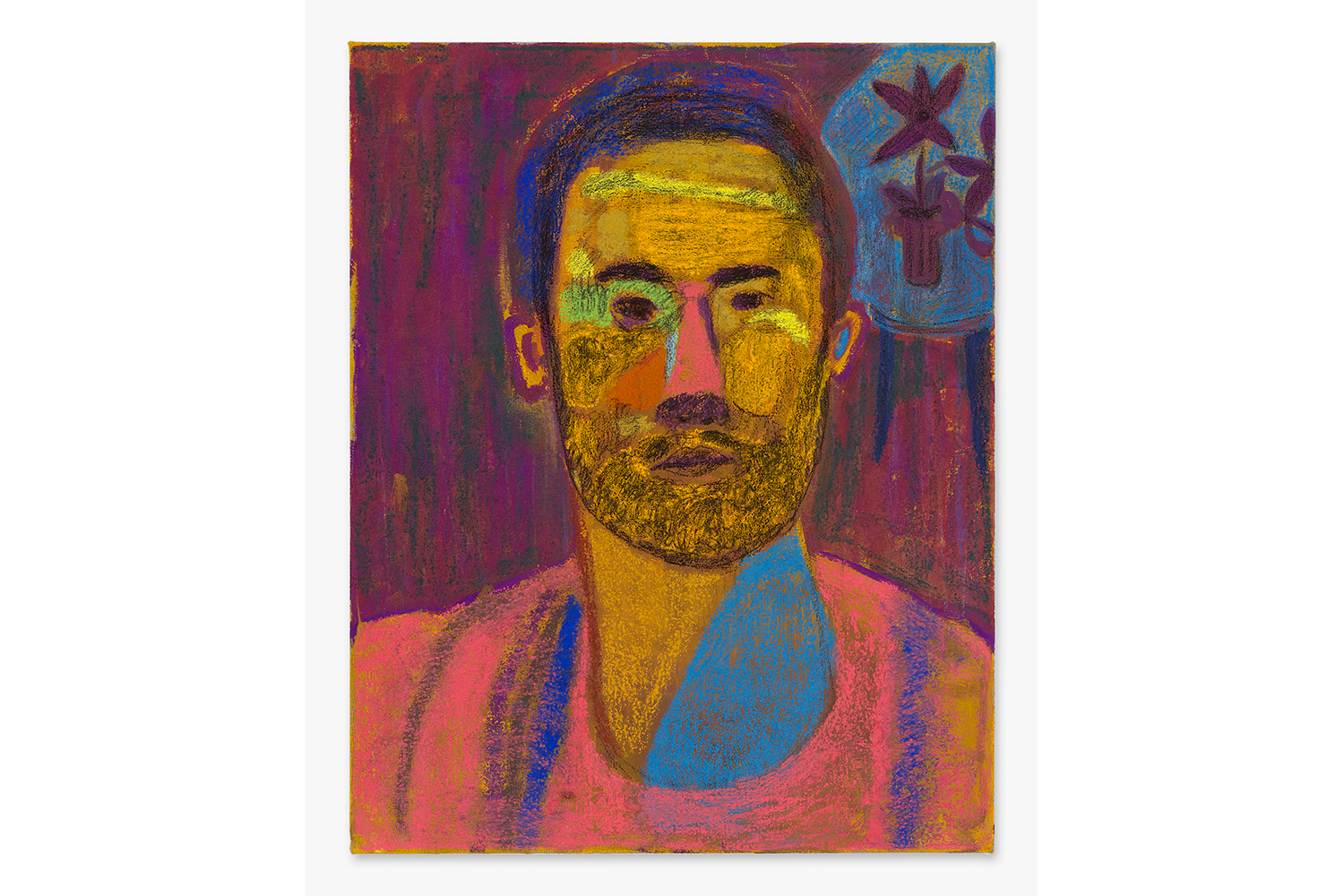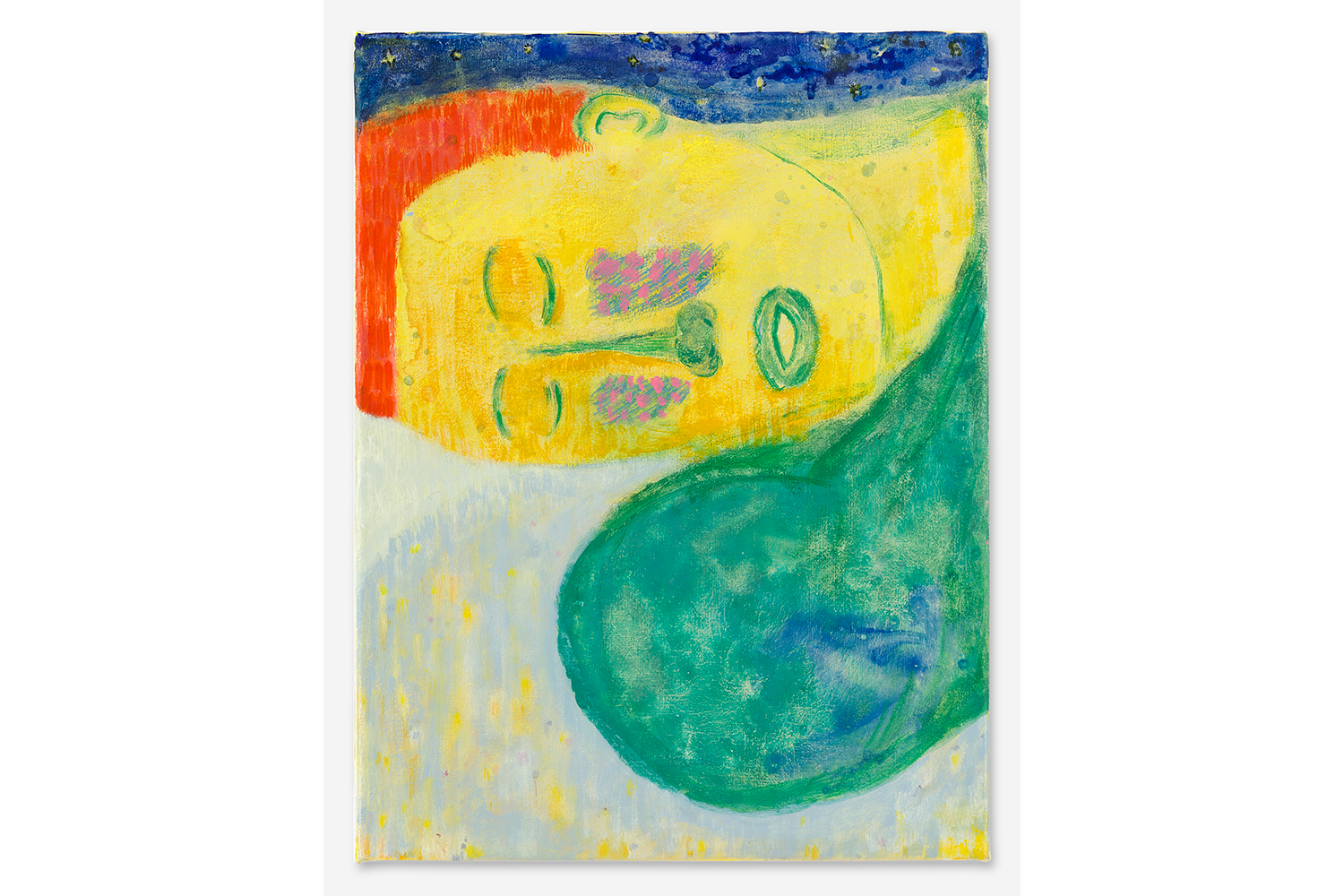Shota Nakamura’s latest works are a celebration of abundant, queer rest. Languid men lie prone in all but two of the paintings in “dear moon,” the artist’s first solo exhibition at Peres Projects in Berlin. Some of Nakamura’s figures doze naked amid blooming flowers and towering trees, while others snooze at a desk or kitchen table. The self-absorbed sleepers recall the myth of Jupiter and Antiope — a familiar theme in Western painting — in which Zeus, disguised as a satyr, preys upon a slumbering nude forest nymph. Nakamura’s paintings replace the nymphs with beautiful young men and get rid of the offending god, queering the story and eliminating any sense of threat. In doing so, his paintings of gentle, somnolent men offer a tender, inventive view of the luscious and vulnerable human body at rest.
Free to simply sleep, the figure is present in Nakamura’s paintings, but his subconscious is far, far away. The artist represents this liminal, disembodied dreaming in his men’s physical features, which vacillate between layered figuration and brushy dissipation. In A sleeping guy in the meadow (2021), the boy’s fleshed-out face rests on a smudge of a hand that emerges from a semi-transparent sleeve. Nude from the waist down and lying on his belly with his legs open, the figure also gives off a lightly erotic charge. In this and other works, Nakamura’s plays on the male body pick up the thread of artists like Matisse and Koide Narashige, who delight in the sensual elasticity of the reclining, restful nude.
Nakamura’s varied bodies also reflect the artist’s varied media: in “dear moon,” he moves through watercolor, acrylic, pastel, and gouache, sometimes on the same canvas. His painterly, mixed-media surfaces produce a shifting sense of unreality that is heightened by the artist’s unexpected, tangy colors. In Lemon on the pink table (2021), a sleeper sports periwinkle cheeks and mustard yellow ears; A sleeping guy (2021) has tangerine hair and jungle-green lips. Nakamura’s vibrant palette is a nod to his Nabi influences, but it is also a joyful externalization of the otherworldly possibilities of dreams.
Nakamura’s previous works have focused on birds, flowers, and other natural elements. Nature is still present in his latest works, though it ranges widely from flowering meadows to potted plants. In “dear moon” Nakamura is careful to remind the viewer of the presence of human life. Two nude men lounge between tall trees in Sleepers (2021), but a window glows persistently in the distance. Surrounded by rocks and flowers, A sleeping man (2021) grips his penis on a bed while his head rests on a small, tidy pillow. The works’ odd blend of domesticated and natural space reflects the way we’ve lived over the past year, when so many of us only find ourselves in nature when we’re within the world of dreams. Seen from the ongoing anxiety of the pandemic, Nakamura’s sleeping men represent a welcome escape into a blissful, colorful world of complete and total release.


